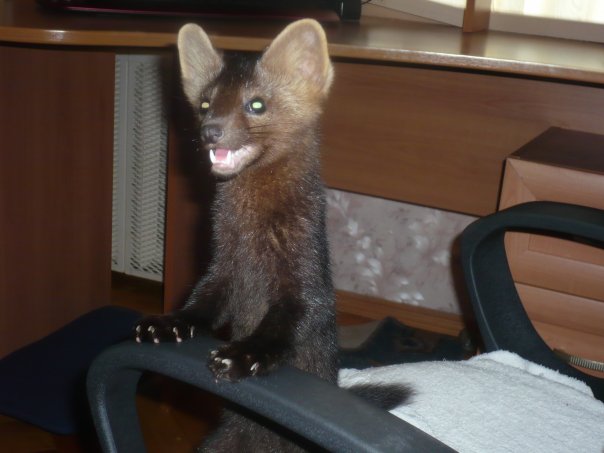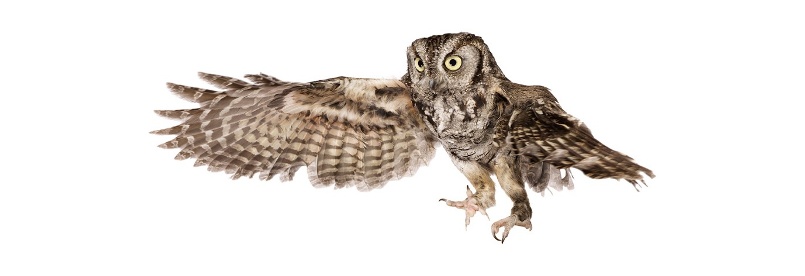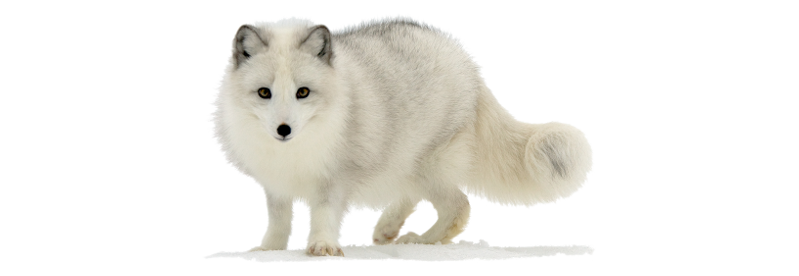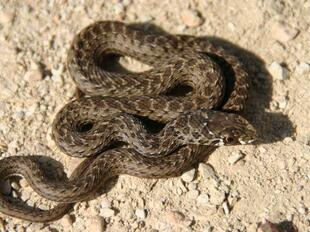
Sable(Martes zibellina)
Phylum —chordata
Class — mammalia
Order — carnivora
Family — mustelidae
Genus – martes
Appearance
Males measure 38–56 centimeters (15–22 in) in body length, with a tail measuring 9–12 centimeters (3.5–4.7 in), and weigh 880–1,800 grams (1.94–3.97 lb). Females have a body length of 35–51 centimeters (14–20 in), with a tail length of 7.2–11.5 centimeters (2.8–4.5 in).
The winter pelage is longer and more luxurious than the summer coat. Different subspecies display geographic variations of fur color, which ranges from light to dark brown, with individual coloring being lighter ventrally and darker on the back and legs.
Habitat
Sables are found in Russia, from the Ural Mountains throughout Siberia, and northern Mongolia. They are also found on Sakhalin. Their habitat also borders eastern Kazakhstan, China, North Korea, and Hokkaidō, Japan.
Behavior
Sables are solitary creatures. They defend home territories that may be anything from 4 to 30 square kilometers (1.5 to 11.6 sq mi) in size, depending on local terrain and food availability. However, when resources are scarce they may move 6 to 12 kilometers (3.7 to 7.5 mi) per day in search of food. They mark their territory with the scent produced in glands on the abdomen. Sables are mainly terrestrial but may climb well if they need to.
They are primarily crepuscular, hunting during the hours of twilight, but become more active in the day during the mating season. They hunt primarily by sound and scent, and they have an acute sense of hearing.
Sables live in burrows near riverbanks and in the thickest parts of woods. These burrows are usually dug among tree roots; they are well hidden, and lined by grass and shed fur, but may be temporary, especially during the winter, when the animal travels more widely in search of prey.
Diet
Sables are omnivores, and their diet varies seasonally. In the summer, they eat large numbers of hare and other small mammals. In winter, they feed on wild berries, pine nuts, rodents, hares, and even small musk deer. They also hunt ermine, small weasels and birds. Sometimes, Sables follow the tracks of wolves and bears and feed on the remains of their kills. They eat mollusks such as slugs, which they rub on the ground in order to remove the mucus. Sables also occasionally eat fish, which they catch with their front paws.
Reproduction
Sables generally mate between June and August. When courting, they run, jump and "rumble" like cats. Males dig meter long shallow grooves in the snow, frequently accompanied by urination. They fight each other violently for females. Sables give birth in tree hollows, where they build nests composed of moss, leaves, and dried grass. Litters number 1 to 7 kits, although litters of 2 or 3 are most common.
The gestation period lasts 245 to 298 days. During this time males assist females by defending their territories and providing food. Kits are born with eyes closed and skin covered in a very thin layer of hair. They weigh between 25 and 35 grams (0.88 and 1.23 oz) and average 10 to 12 centimeters (3.9 to 4.7 in) in length. Kits open their eyes between 30 and 36 days and leave the nest shortly afterwards. At 7 weeks, the young are weaned and given regurgitated food. They become reproductively mature at the age of two years.
Sables in the wild are believed to have a lifespan of about eight years, although they have been observed to live up to 18 years in fur farms.
In captivity
Sables raised in captivity can be very tamed — freely walk around the room or yard and at the sight of the owner run to his call in the hope of getting a treat.
In captivity the sable is unpretentious to food: it eats liver, brains, blood, tripe, meat, but especially prefers small rodents. Liver is recommended to be given regularly throughout the year for 25-30 g per day for an adult animal. Meat, mostly, should be given in raw form. From other forages the sable eats pupae of insects, dry cottage cheese, meat blood meal, vegetables, nuts and berries, porridge from crushed wheat, barley or oatmeal, milk.
 Russian
Russian
 English
English
























